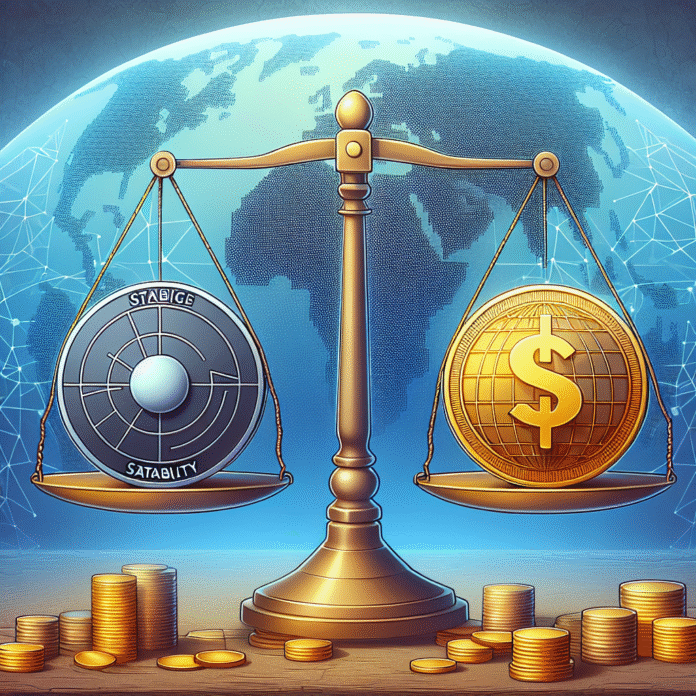Stablecoins and Tokenized Real World Assets in the Long Run
BlockchainReporter
Stablecoins vs. Tokenized Real-World Assets: A Clash of Titans in the Blockchain Arena
In the rapidly evolving landscape of digital finance, the debate between stablecoins and tokenized real-world assets (RWAs) is gaining momentum. Both innovations offer unique advantages and challenges, but which one is poised to dominate the future of blockchain technology?
Understanding Stablecoins
Stablecoins are digital currencies designed to maintain a stable value by pegging them to traditional fiat currencies, commodities, or other assets. Their primary appeal lies in their ability to mitigate the volatility typically associated with cryptocurrencies like Bitcoin and Ethereum.
Types of Stablecoins
- Fiat-Collateralized Stablecoins: These are backed by reserves of fiat currencies, such as the US dollar. Examples include Tether (USDT) and USD Coin (USDC).
- Crypto-Collateralized Stablecoins: These utilize other cryptocurrencies as collateral. DAI is a notable example, which is backed by Ethereum and other cryptocurrencies.
- Algorithmic Stablecoins: Unlike the first two types, algorithmic stablecoins are not backed by any collateral. Instead, they use algorithms to control supply and demand, adjusting the coin’s supply dynamically to maintain its peg.
Tokenized Real-World Assets
Tokenized RWAs represent tangible assets on a blockchain, allowing for fractional ownership and improved liquidity. These assets can range from real estate and commodities to art and intellectual property. By tokenizing these assets, they become more accessible to a broader range of investors, democratizing investment opportunities.
Benefits of Tokenization
- Increased Liquidity: Tokenization can make traditionally illiquid assets more liquid through fractional ownership, enabling easier buying and selling.
- Accessibility: Tokenized assets can lower the barriers for entry, allowing smaller investors to participate in markets that were previously reserved for wealthy individuals or institutions.
- Transparency and Security: Blockchain technology ensures that ownership records are immutable and transparent, reducing the risk of fraud.
The Key Differences
While both stablecoins and tokenized RWAs leverage blockchain technology, their purposes and functionalities differ significantly. Stablecoins primarily serve as a medium of exchange and a store of value, while tokenized RWAs focus on representing ownership of physical assets.
The Future Outlook
The future of finance may see both stablecoins and tokenized RWAs coexisting, each serving unique roles in the ecosystem. Stablecoins could provide a stable medium for transactions in decentralized finance (DeFi) applications, while tokenized RWAs could revolutionize how we invest in and trade physical assets.
Conclusion
As the blockchain landscape continues to evolve, both stablecoins and tokenized real-world assets are likely to play pivotal roles in shaping the future of digital finance. Their success will hinge not only on technological advancements but also on regulatory frameworks and market adoption. Investors and stakeholders must keep a close eye on these developments, as the winner of this long game could redefine financial systems worldwide.
With the potential for significant disruption in traditional finance, understanding the nuances of these two innovations is crucial for anyone involved in the digital assets space.

